Today, I’d like to share with you the most popular paella rice substitutes that my family and I swear by, especially for those moments when you find yourself in a pinch.
Ever been halfway through making a paella and suddenly realized you’re out of that all-important Bomba rice? Yeah, been there, done that. Just last month, I was whipping up my family’s fave chicken paella and—oops!—no Bomba rice to be found. But hey, that didn’t stop me. I’ve been down this road before and tried out different rice substitutes. Some of them? Let’s just say they turned out to be a pretty awesome rice dish.
Why Rice Matters In Paella
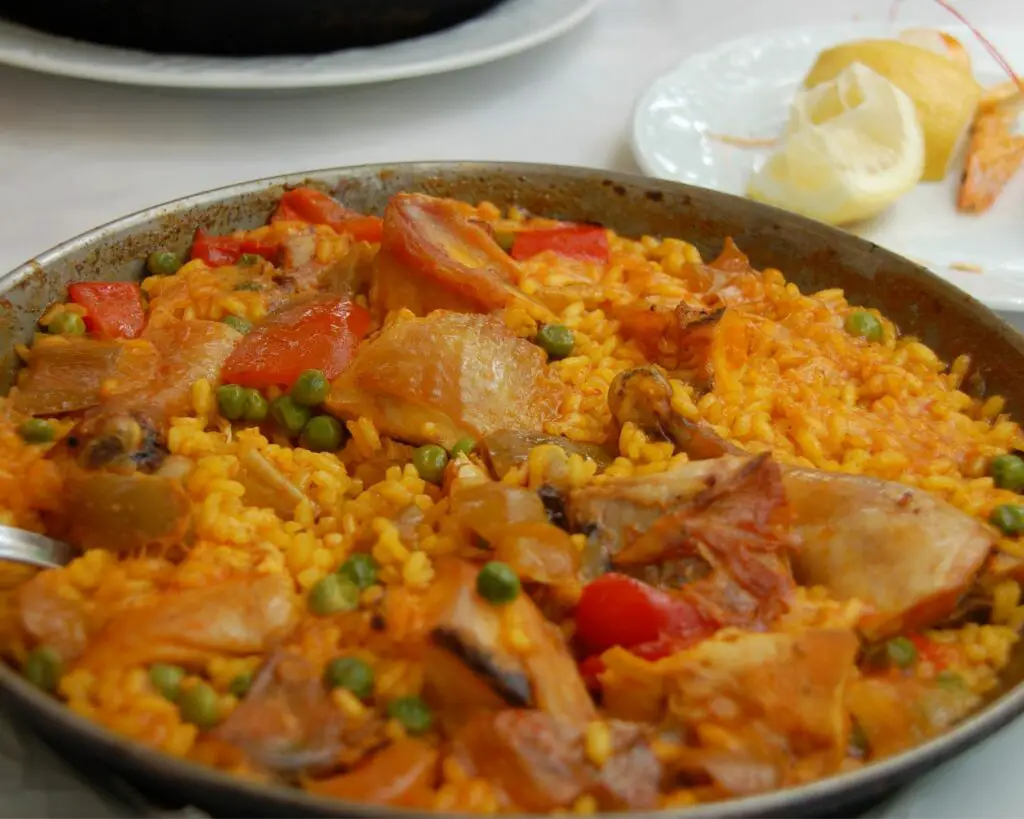
Rice truly is the heart and soul of paella. It has this incredible ability to absorb all those rich, delicious flavors from the broth while staying perfectly tender without getting mushy. Now, I get it, Bomba rice is the gold standard when it comes to authentic paella.
However, in a pinch, there are other types of rice that can come close to replicating that genuine Spanish taste and texture. Some people suggest using barley, bulgur wheat, or quinoa, but to truly capture the essence of authentic paella, it really should be some type of rice.
Fun Fact About Paella: While many people associate paella with seafood, the original Valencian paella was actually made with rabbit, chicken, and sometimes duck. Seafood paella became popular only later as the dish spread to coastal areas.
Here’s my roundup of some of the best paella rice substitutes:
1. Arborio Rice

The first time I found myself without Bomba rice, my Italian neighbor recommended Arborio. Though I was skeptical—after all, paella is steeped in Spanish tradition—it turned out to be a revelation! Arborio, commonly used in Italian risottos, shares a similar short-grain texture with Bomba and excels at soaking up flavors. It proved to be a fantastic alternative.
Measurement and Tip for Using Arborio Rice for Paella
Arborio rice uses about 2.5 cups of broth for 1 cup of rice. Its creaminess demands a bit less liquid than Bomba to avoid an overly creamy outcome. Arborio rice cooks at a slightly faster rate than Bomba, so ensure you adjust your cooking time!
Read Also: 6 Compelling Reasons to Rinse Your Rice Before Cooking!
2. Calrose Rice
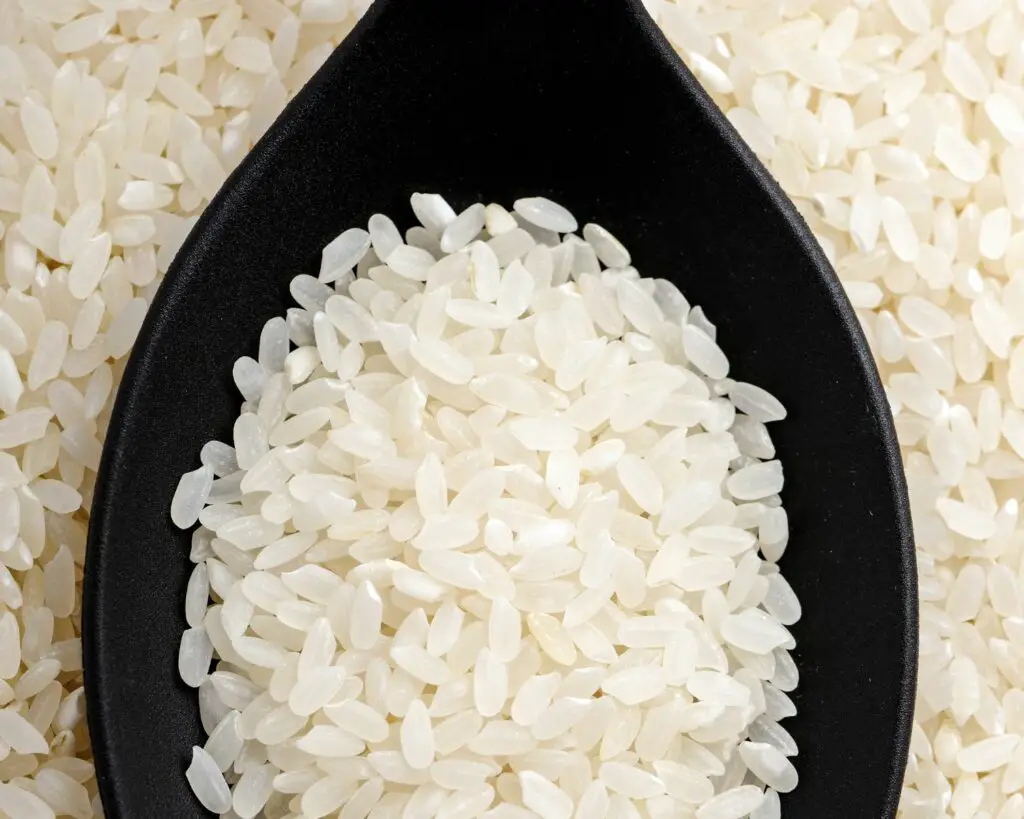
Calrose is a medium grain, popular in many Asian cuisines, especially sushi. My husband enjoys sushi nights, so I often have this rice handy. While it’s slightly longer than Bomba, it has a similar stickiness and absorption rate, making it a decent stand-in for paella.
Measurement and Tip for Using Calrose Rice for Paella
Calrose rice needs between 2 to 2.25 cups of broth per cup of rice. It’s denser and has a slight stickiness after cooking. Let Calrose enjoy a 30-minute soak before introducing it to the pan. It’s almost like letting it stretch before the main act, yielding fluffier grains.
Fun Fact: Did you know that the word “paella” actually refers to the wide, shallow pan used to cook the dish? In Valencia, where paella originates, the dish and the pan share the same name!
3. Valencia Rice
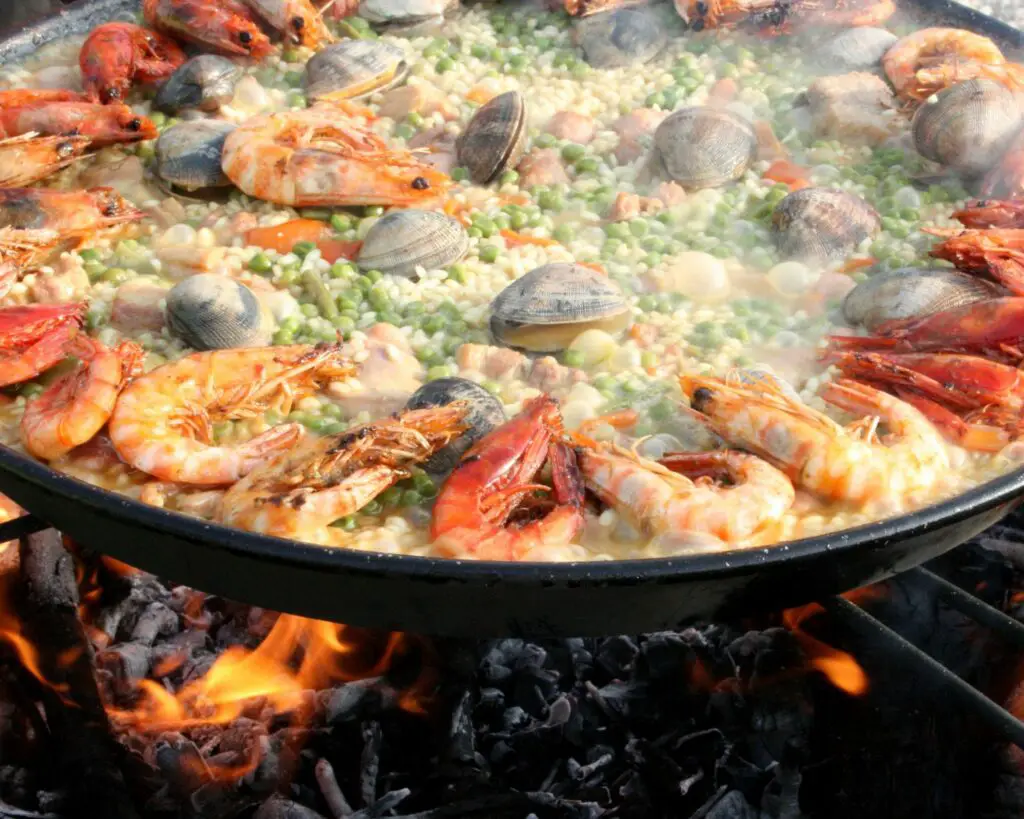
Named after the Spanish city where paella originates, Valencia rice is a no-brainer substitute. It’s slightly rounder than Bomba but works almost the same. My family loves the slightly softer texture it brings to the dish. Given its softer nature, Valencia rice can absorb broth quickly. It’s crucial to monitor your broth levels.
Measurement and Tip for Using Valencia Rice for Paella
Requires 2.5 cups of broth for 1 cup of rice. A close Bomba kin with a slightly differing texture. I recommend warming some broth on the side and adding it as needed.
Top Tip for Making Paella: The key to an authentic paella is achieving the “socarrat,” the golden, crispy layer of rice that forms at the bottom of the pan. To get this right, resist the temptation to stir the rice once it starts cooking. Let it simmer and absorb the flavors, allowing the bottom layer to crisp up perfectly.
4. Medium-Grain Rice
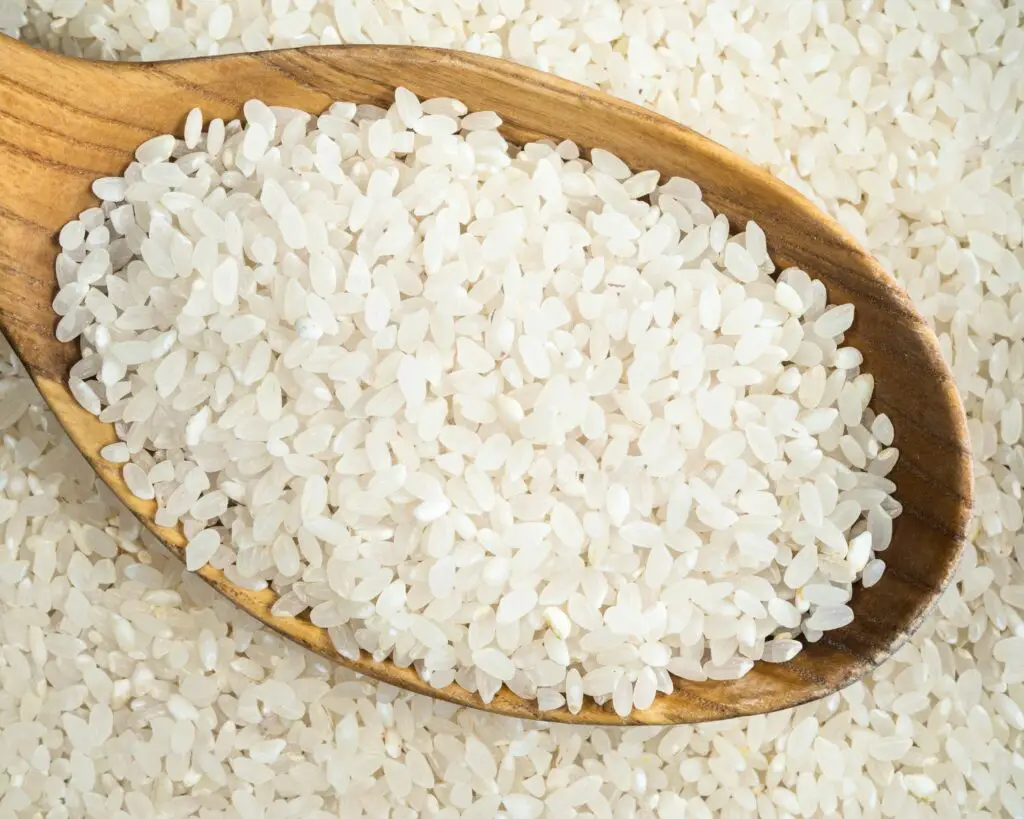
Let’s face it, sometimes we just use what’s in the pantry. On one such day, I used medium-grain rice. The result? A slightly creamier paella that my husband thinks is just as delightful. It’s widely available and saves the day when other types are scarce.
Measurement and Tip for Using Medium-Grain Rice for Paella
Requires 2 to 2.25 cups of broth per cup of rice. This grain type strikes a balance between stickiness and firmness, aptly fitting paella’s requirements.
5. Carnaroli Rice
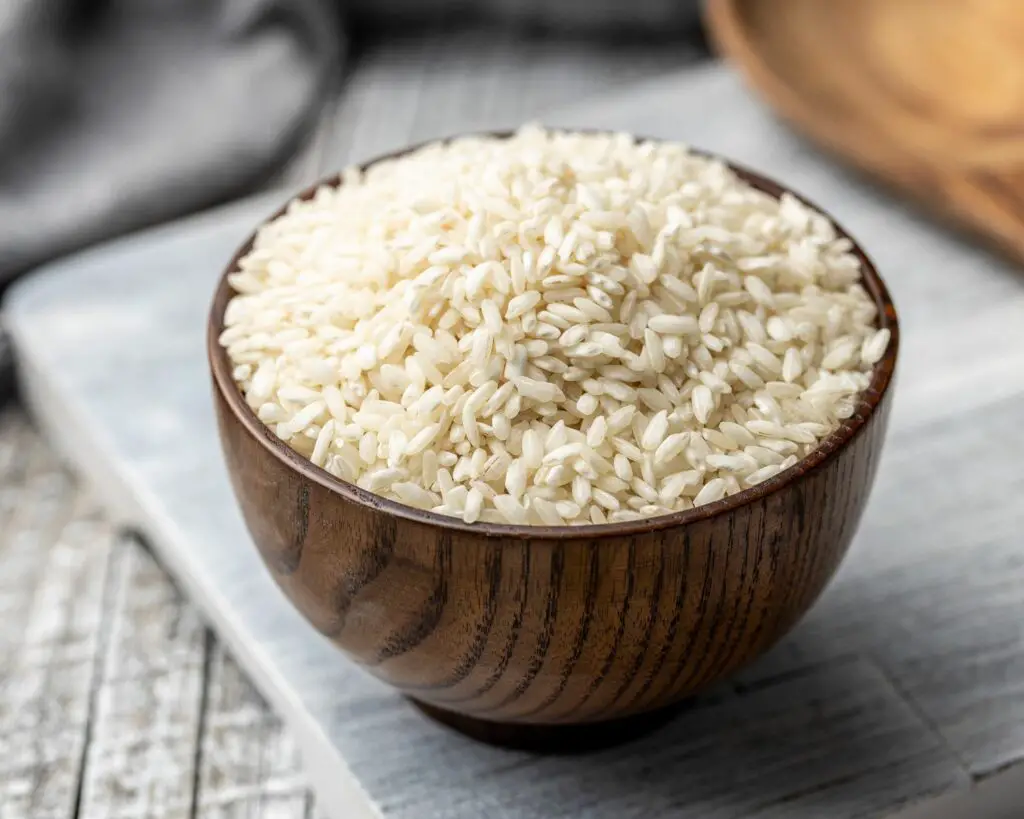
This is another rice variety from Italy, slightly longer than Arborio. Its starchiness provides a creamy texture without the grains getting mushy. In my opinion, it’s an elegant substitute, especially for seafood paellas.
Measurement and Tip for Using Carnaroli Rice for Paella
Calls for 2.5 to 3 cups of broth per cup of rice. Balancing between Arborio and Bomba in texture, it’s absorption-flexible. Due to its starchy nature, it’s essential to rinse Carnaroli rice well before cooking. This will help in maintaining the distinct grains that a good paella demands.
6. Basmati Rice

Believe it or not, you can use basmati rice for paella. And you know what? It adds an exotic twist to the dish. Its long, slender grains are fragrant and add a unique touch. My family loved the mild aromatic flavors, but be cautious with the water content, as Basmati doesn’t require as much liquid.
Measurement and Tip for Using Basmati Rice for Paella
Needs 1.5 to 2 cups of broth per cup of rice. Its slender and aromatic grains mean less absorption and a distinct flavor profile. To avoid overcooking, soak Basmati for about 20 minutes before cooking. This will ensure that the grains remain separate and don’t turn mushy.
7. Jasmine Rice
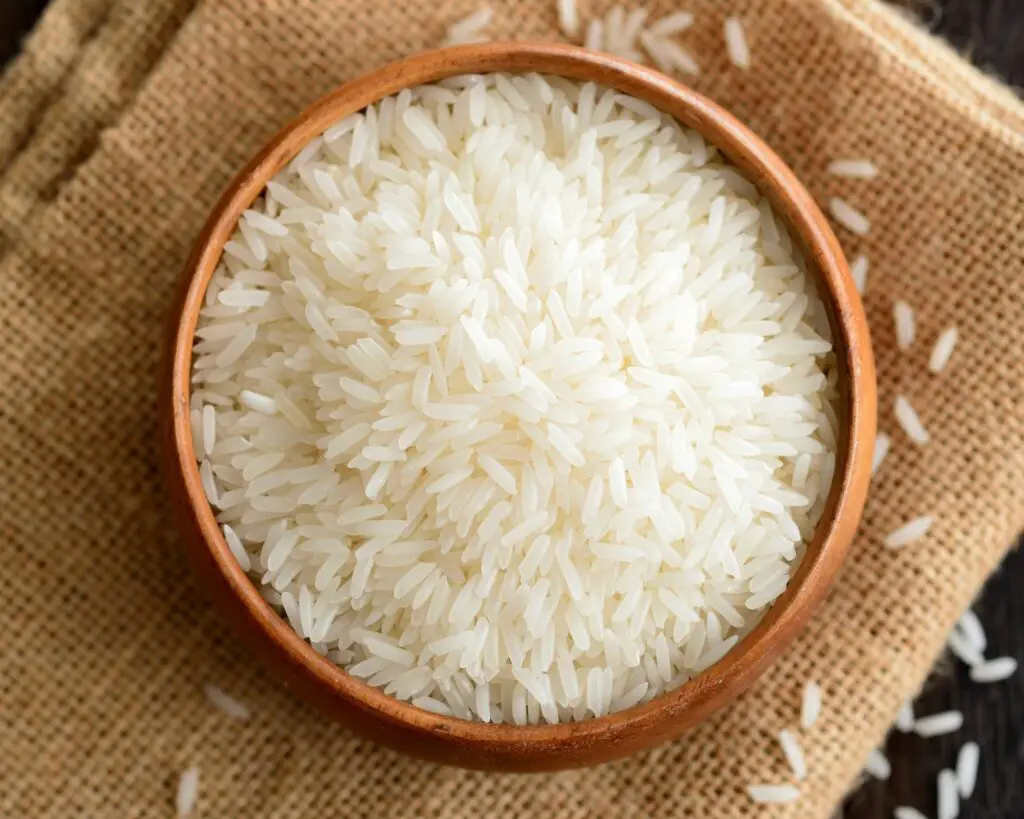
Jasmine rice, popular in Thai cuisine, is known for its beautiful, fragrant aroma and slightly sticky texture after cooking. While not a traditional choice, in a bind, its soft texture can be a pleasant and handy paella rice substitute.
Measurement and Tip for using Jasmine Rice for Paella
Needs 1.5 to 2 cups of broth per cup of rice. Known for its fragrant aroma and soft texture, be cautious not to overcook. Jasmine rice cooks relatively quickly, so you’ll want to monitor it closely. Start by using a bit less broth than you usually would, as Jasmine doesn’t require as much liquid as Bomba.
With alternate rice, you might need to adjust your cooking time or even the heat level. The golden goal, regardless of your rice choice, remains the socarrat. This crispy bottom layer is the crown jewel of paella. Achieving it requires not just the right amount of liquid but also keen attention to the cooking process.
(8. Brown Rice)
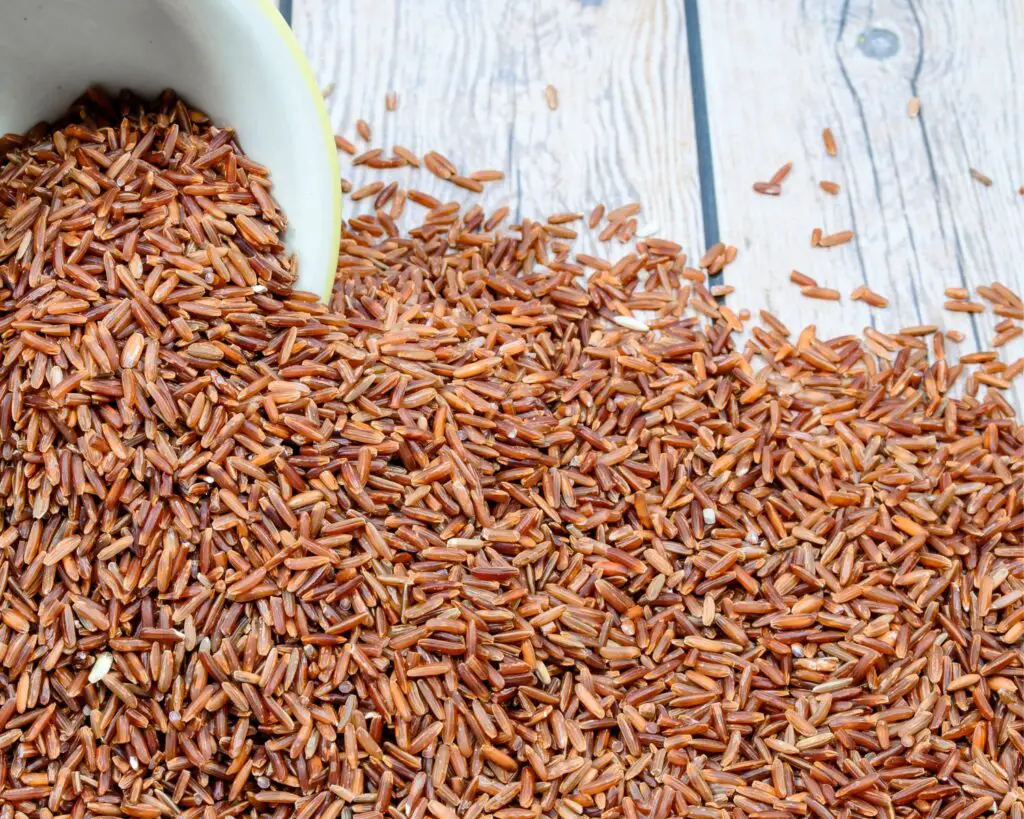
I’ve left brown rice last on this list, and, to be honest, I’m a bit hesitant to include it at all. I’ve tried making paella with brown rice and found it strays significantly from the authentic paella experience. However, I recognize that brown rice is a popular choice for many, so it’s worth discussing.
Brown rice offers a distinct nutty flavor and a notably chewy texture—almost too chewy in my experience. While its bran layer demands extended cooking, it can serve as a substitute, but I would not say it is the best substitute for paella rice.
Measurement and Tip for Using Brown Rice for Paella
If you opt for brown rice, you’ll need to adjust both the amount of liquid and the cooking time. Typically, about 2.5 to 3 cups of broth per cup of brown rice should work, and you’ll have to allow extra time for the grains to become tender.
So, while brown rice won’t give you an authentic paella, it can be a hearty and nutritious alternative if you’re willing to compromise on texture and flavor.
If you’re a fan of brown rice, don’t miss our top 7 Brown Rice Flour Cookie Recipes.
Why Paella Rice Substitutes Can Be Equally Delicious

The essence of cooking lies in adaptation and innovation, not just mere replacement. Consider the evolution of paella; it has countless variations influenced by regional ingredients and tastes.
Some of my culinary revelations have come from necessity. For instance, switching out paella rice for Arborio brought an unexpected creamy richness to the dish. This flexibility in rice choices has allowed me to tailor the paella to my family’s preferences—my husband savors the creaminess of Carnaroli, while my kids lean toward aromatic Basmati.
Substitution doesn’t just cater to taste; it can be a nutritional decision too. For those seeking more fiber, brown rice could be an option—although I wouldn’t consider it the best match for authentic paella. So, diversifying your rice options not only creates a more personalized dish but can also offer health benefits.
Conclusion
I’m a traditionalist at heart, and Bomba rice is my go-to for paella. But life’s curveballs, like running out of Bomba, don’t deter me. In such moments, I turn to the best paella rice substitutes. While some suggest grains like barley or quinoa, I’m convinced that true paella needs rice to absorb those rich flavors.
So, if you’re out of Bomba, see it as a chance to get creative with other rice varieties. As I have, you might discover that unexpected substitution can lead to a delightful paella dish.
Related Article: Which Rice Has The Lowest Carbs? (5 Best And 2 Worst Options).

RICE IS NOT A SUBSTITUTE FOR RICE! YOU ONLY LIST RICE SUBSTITUTES. YOU LIST NO NON-RICE SUBSTITUTES.
I think she meant Paella rice substitutes.